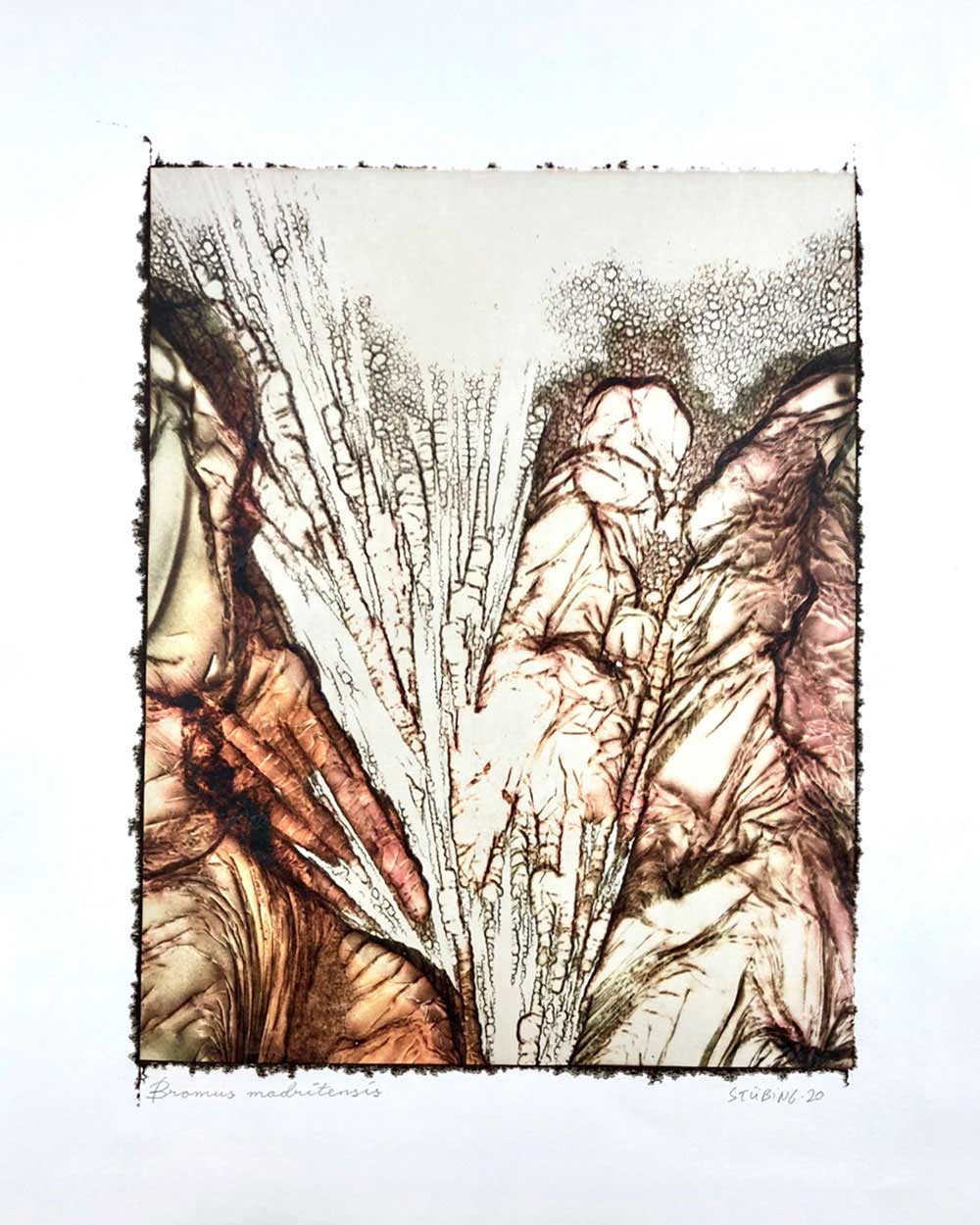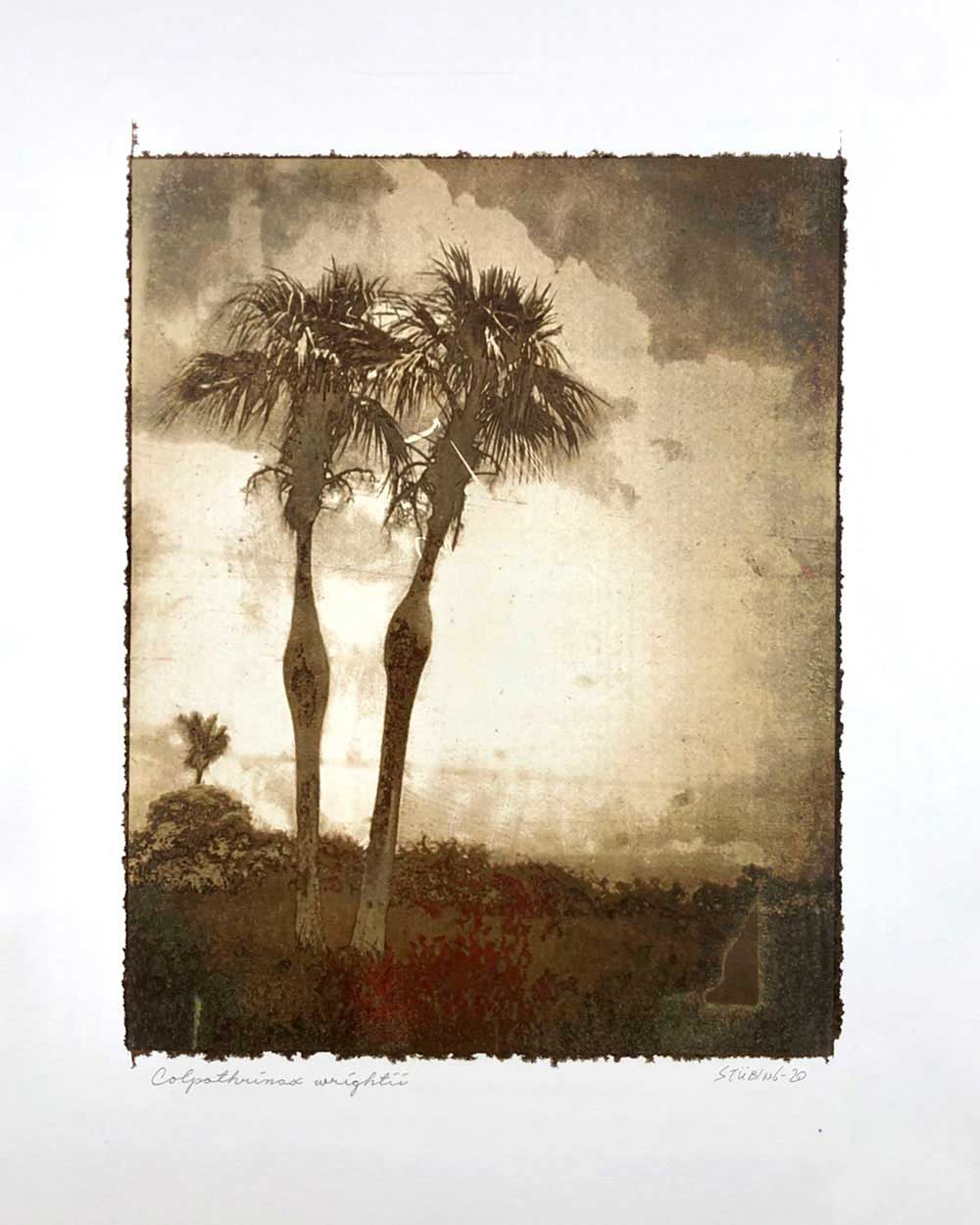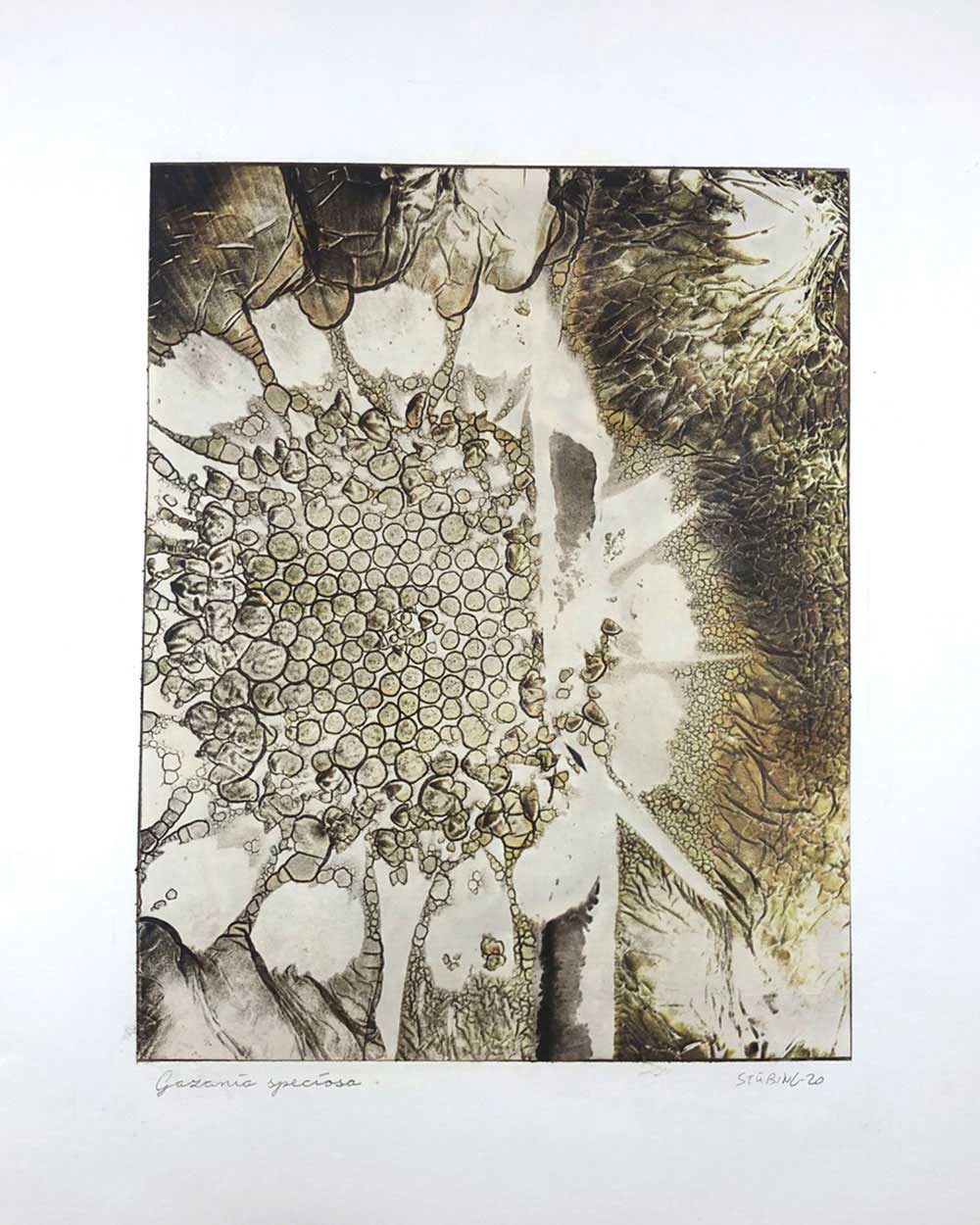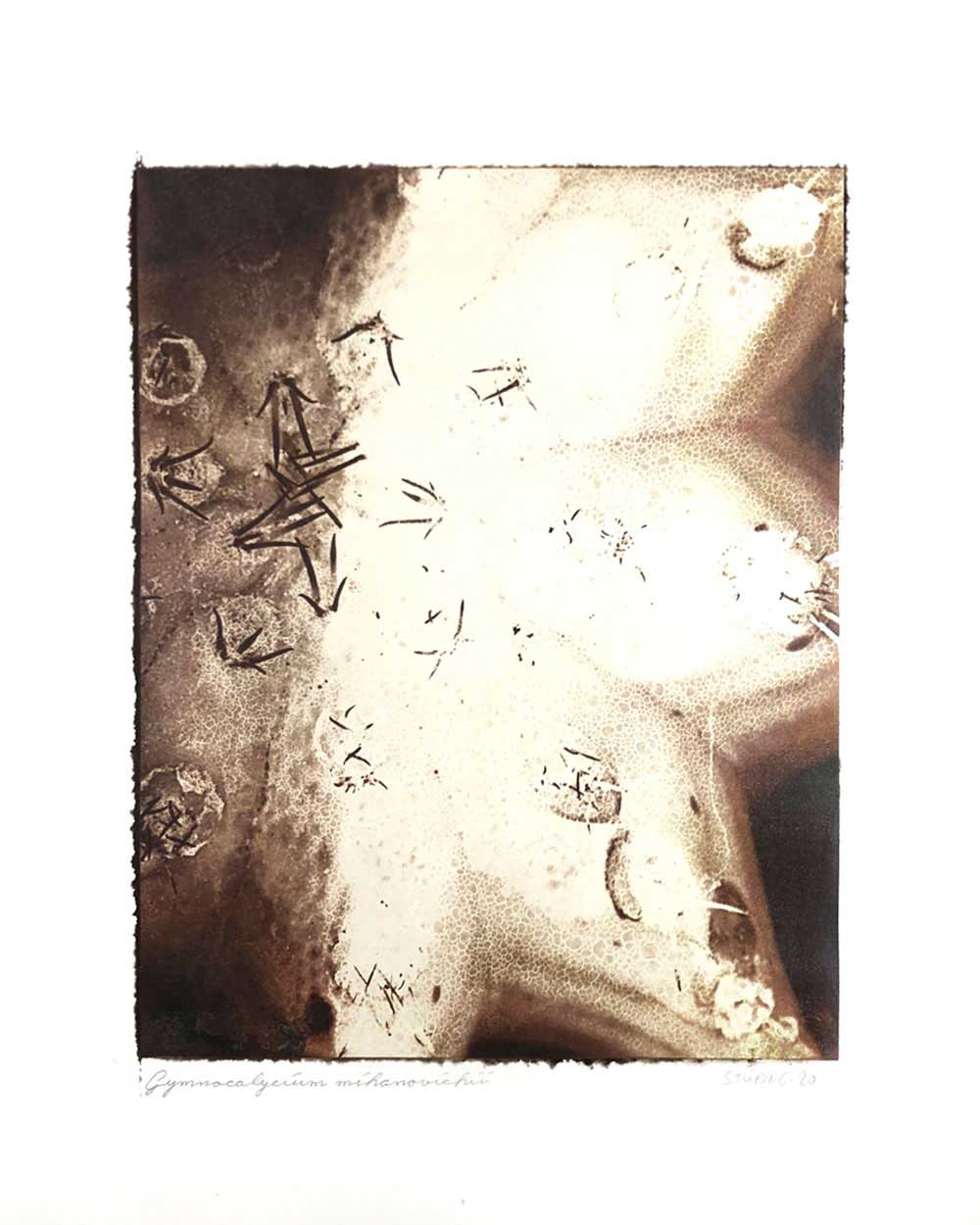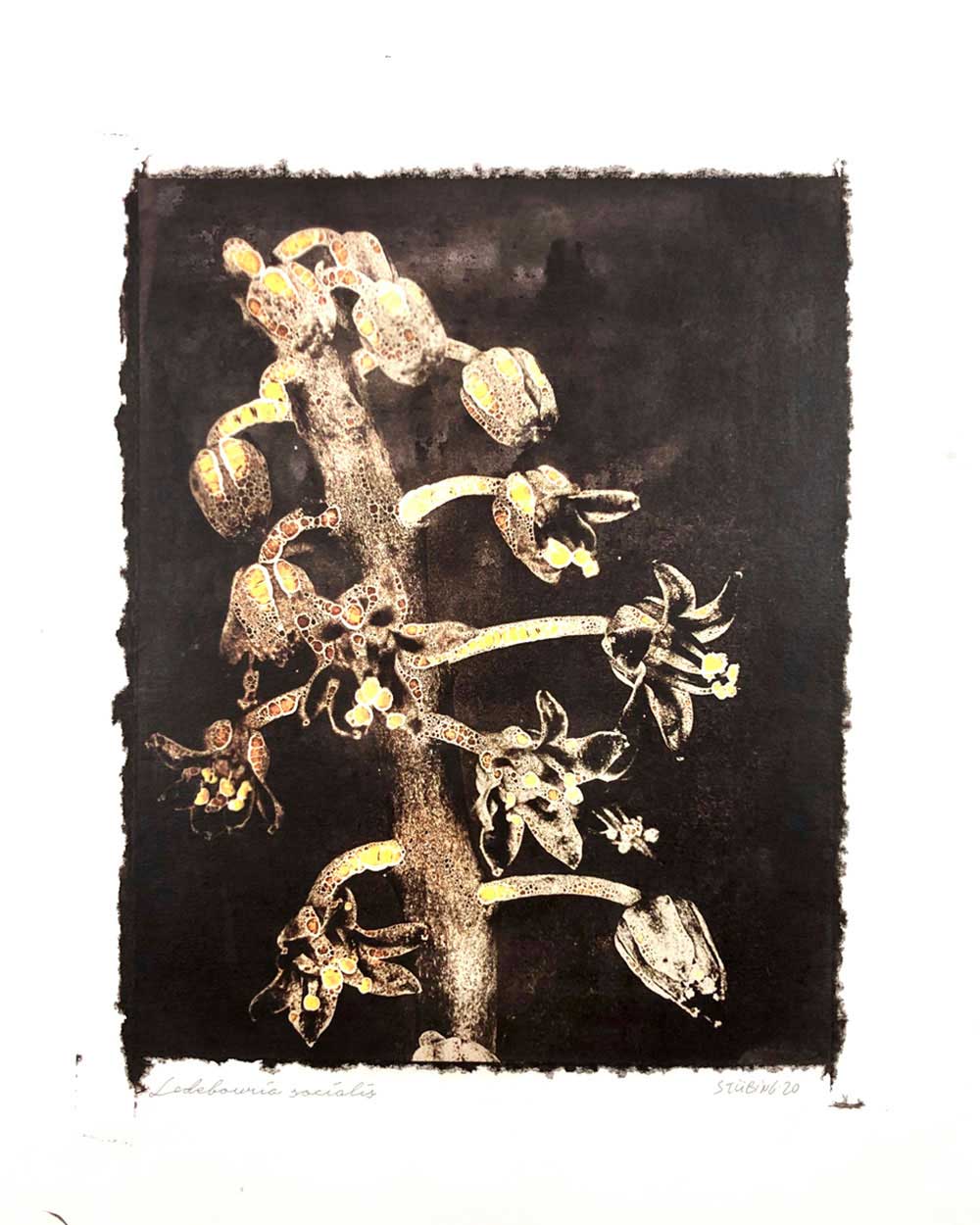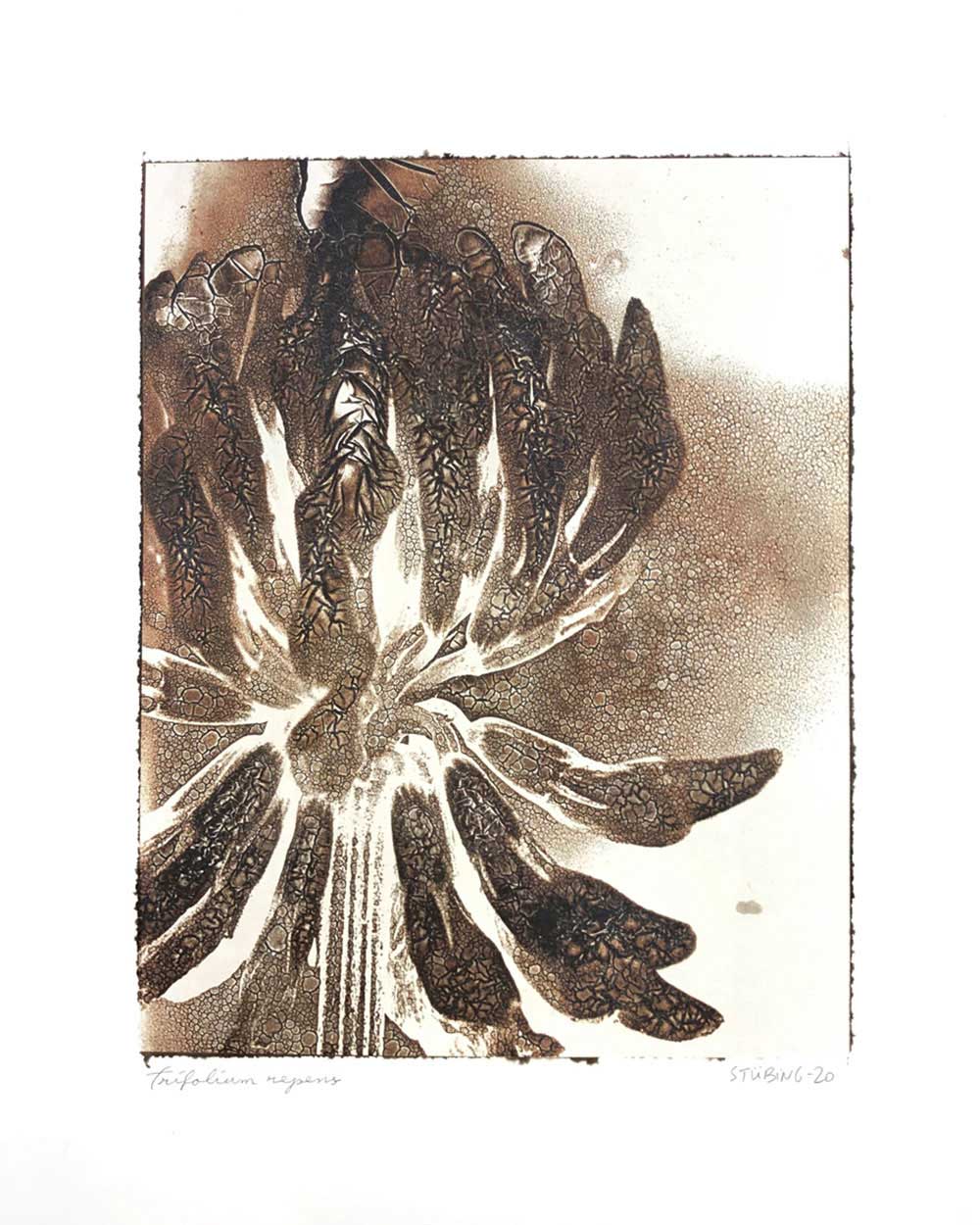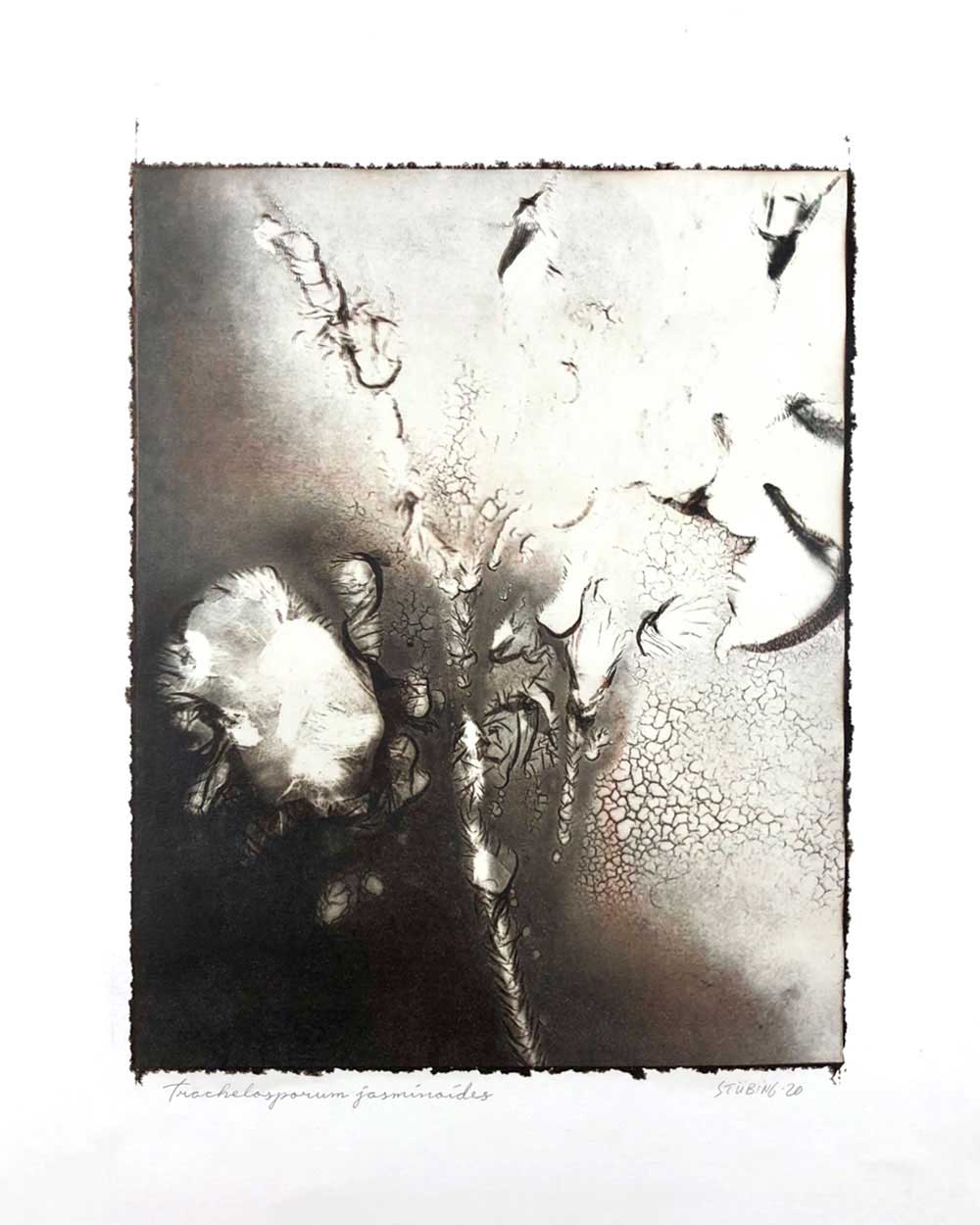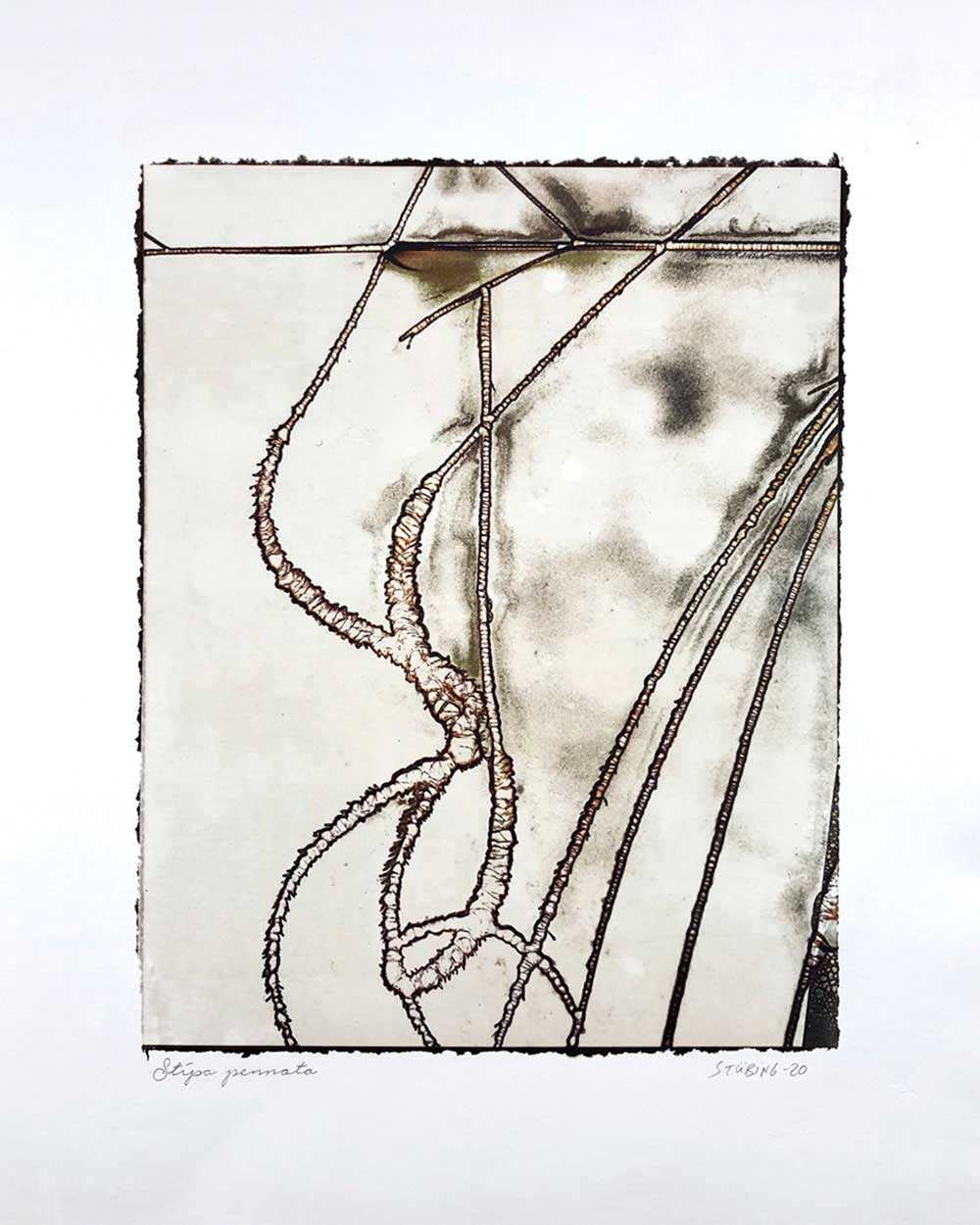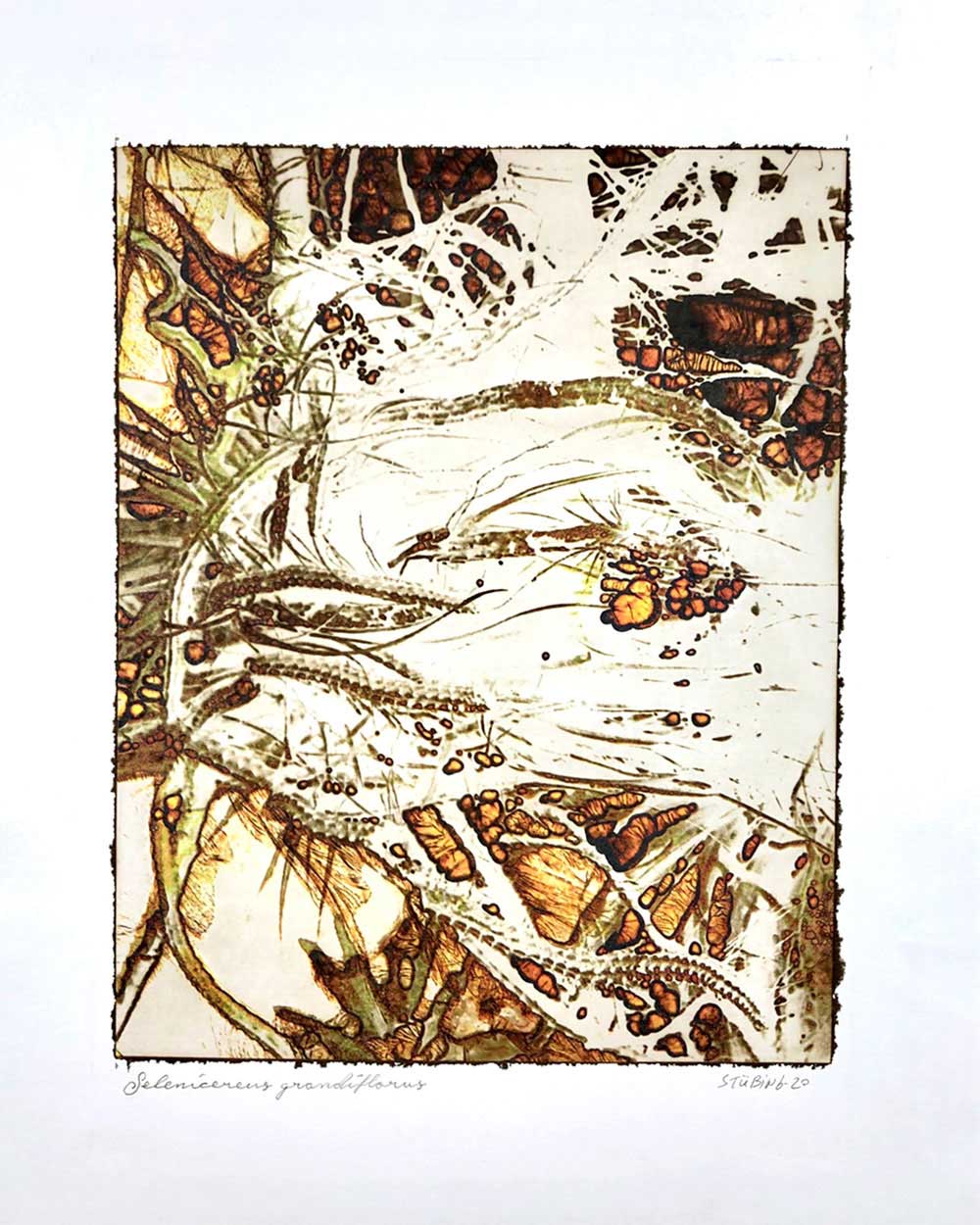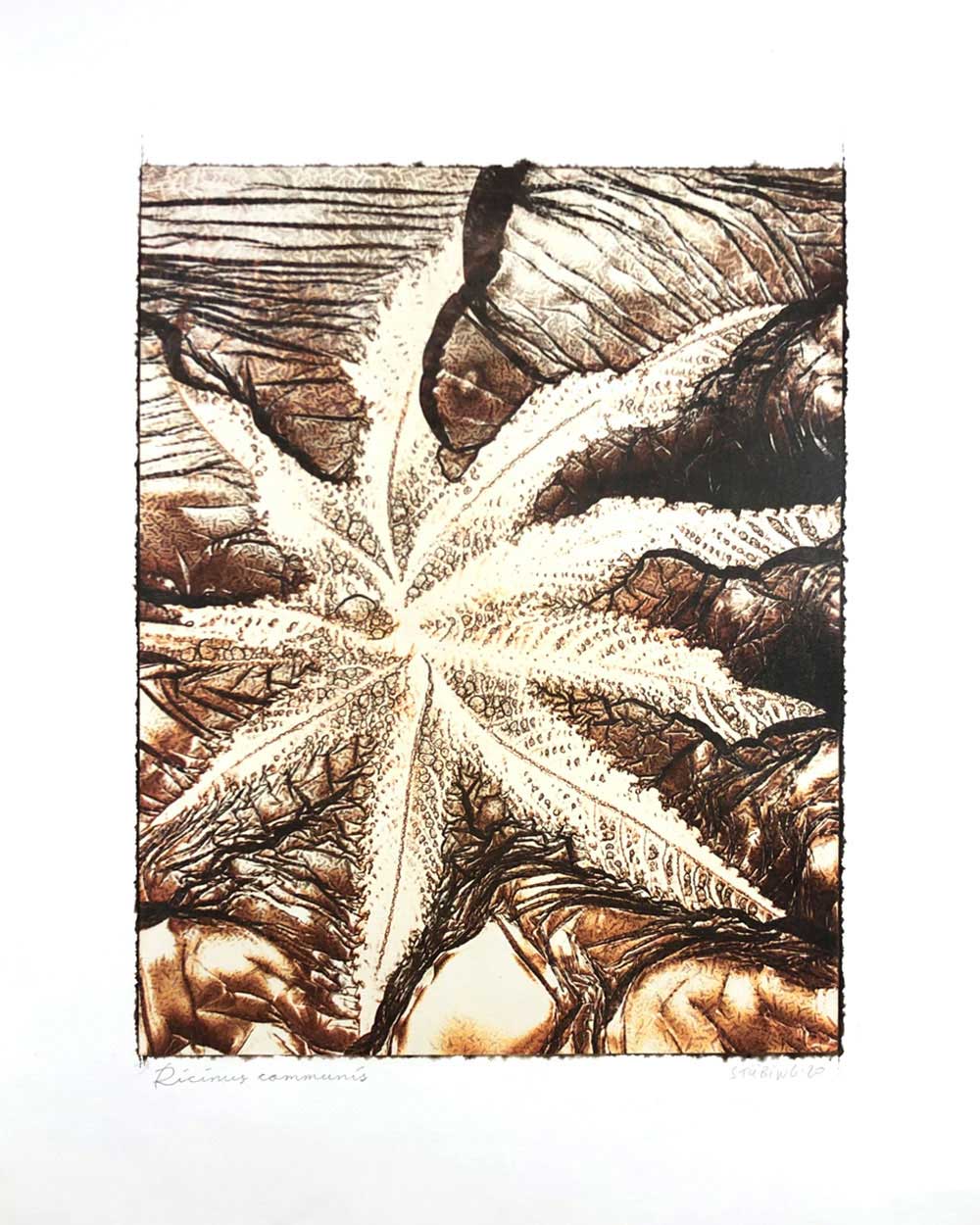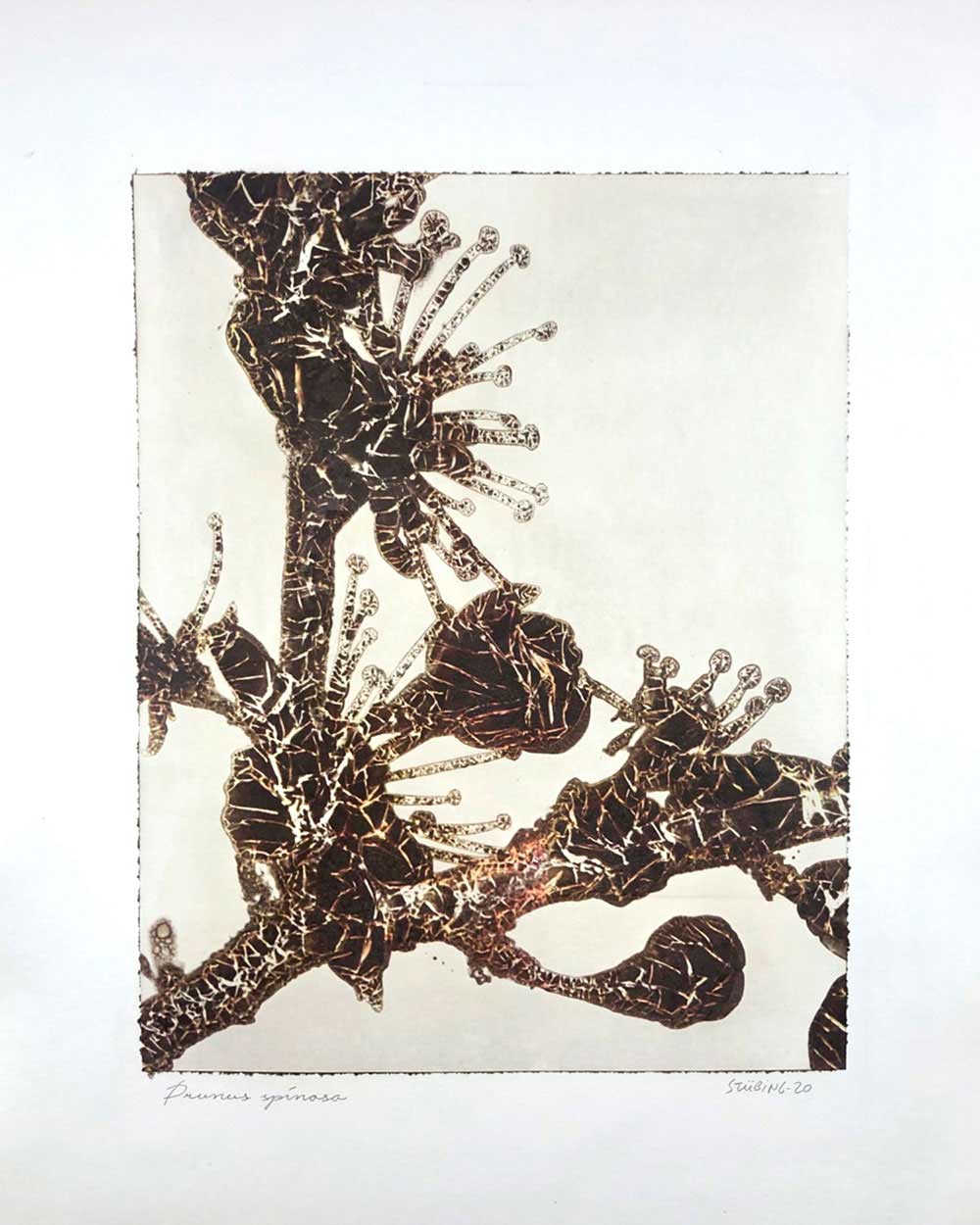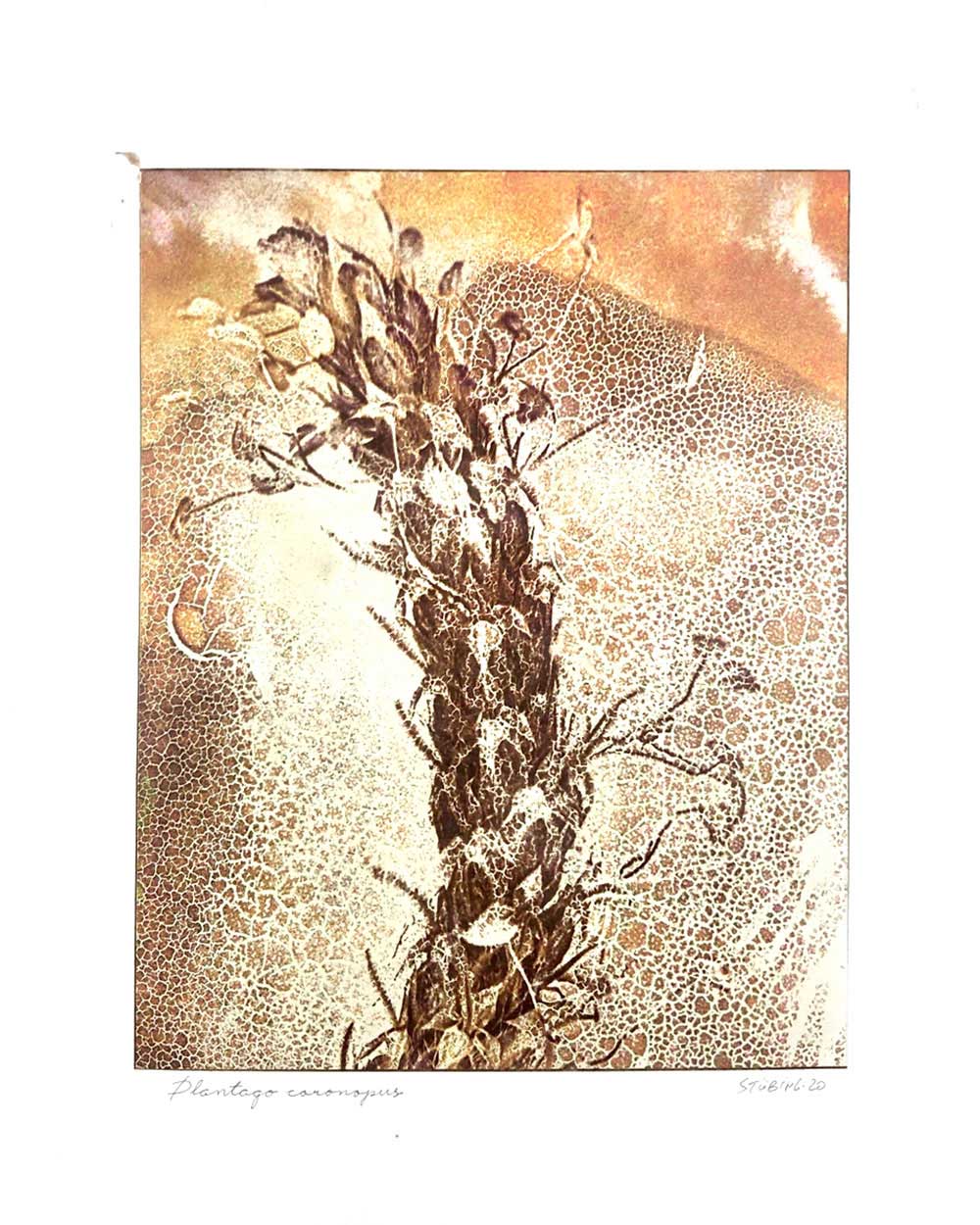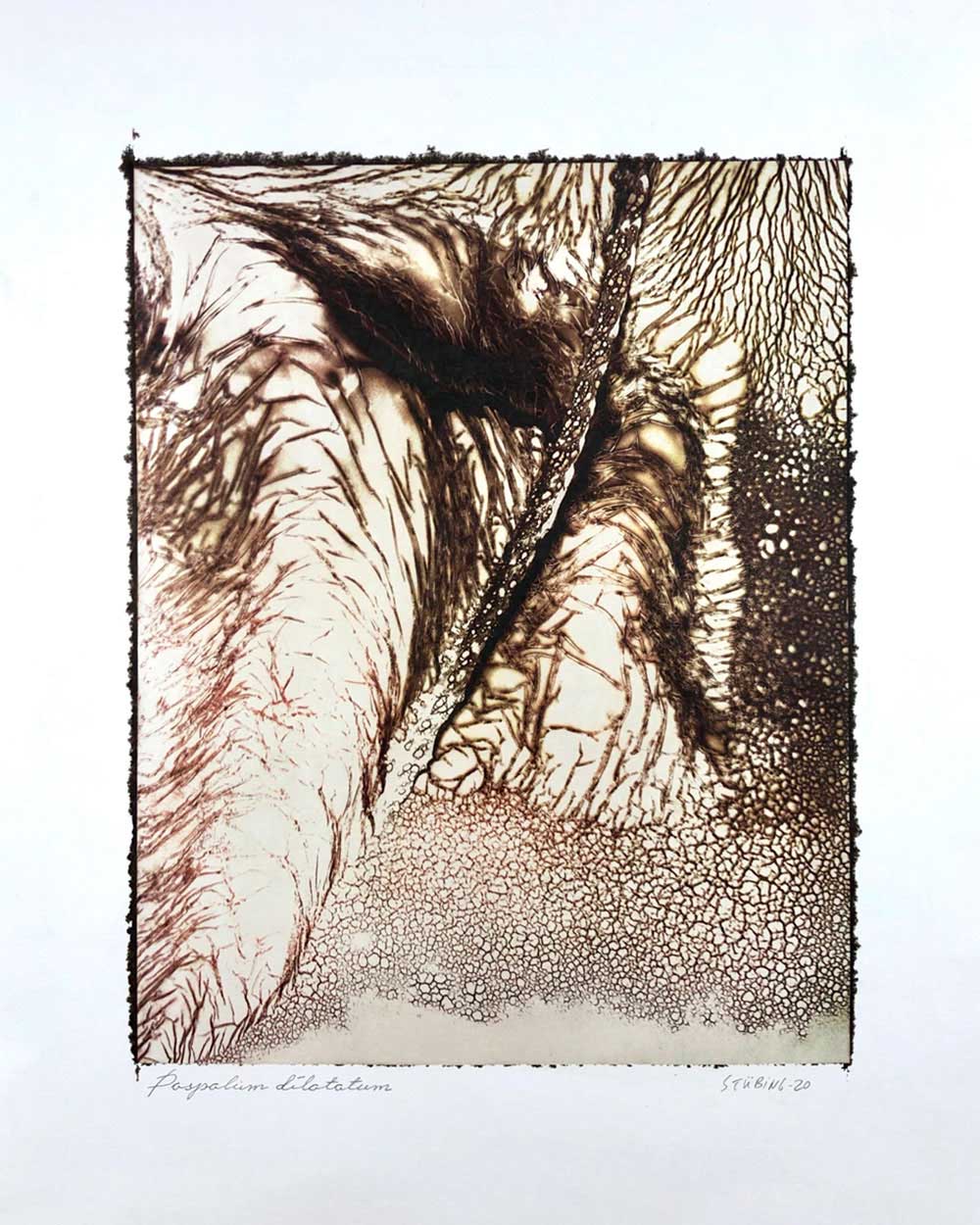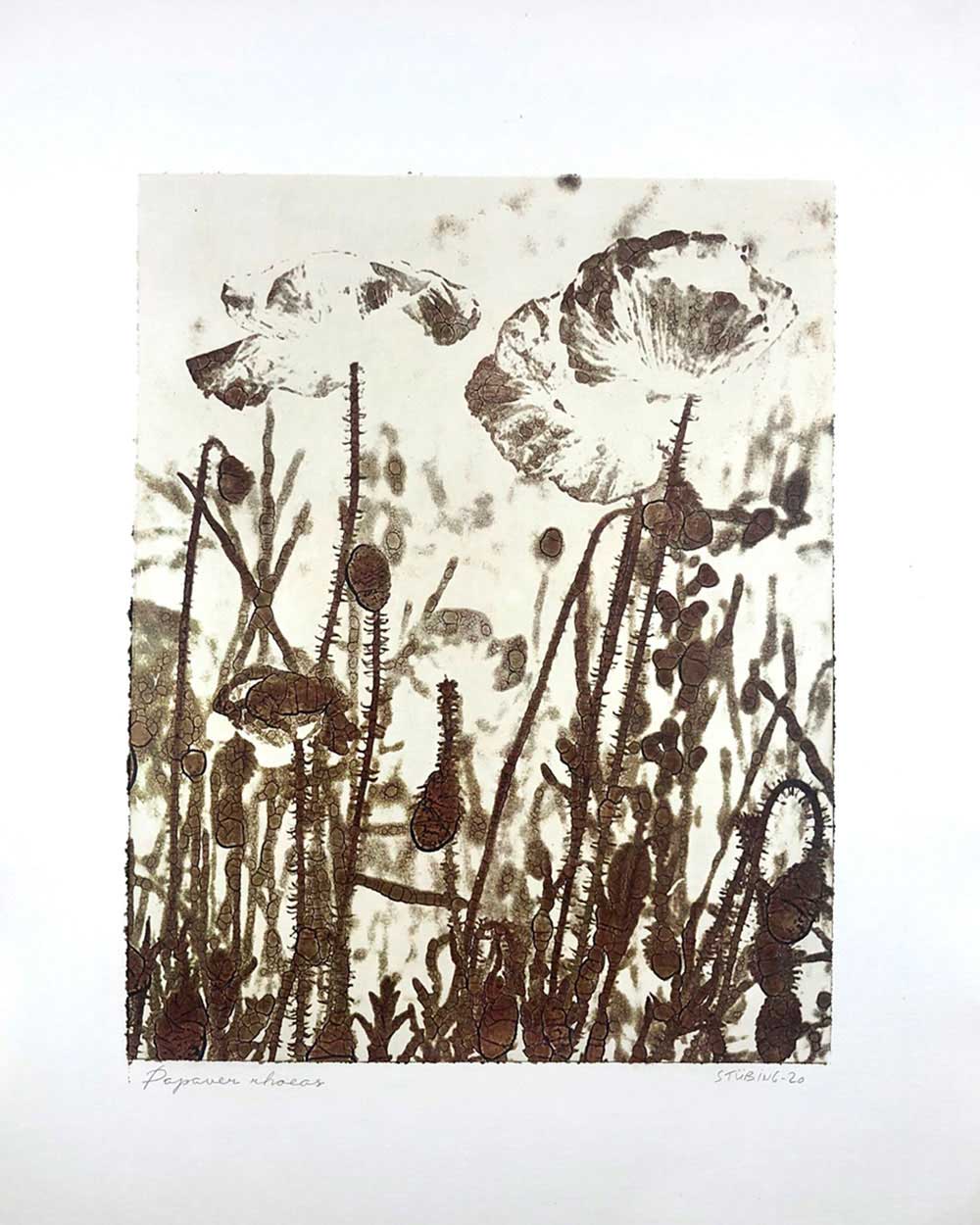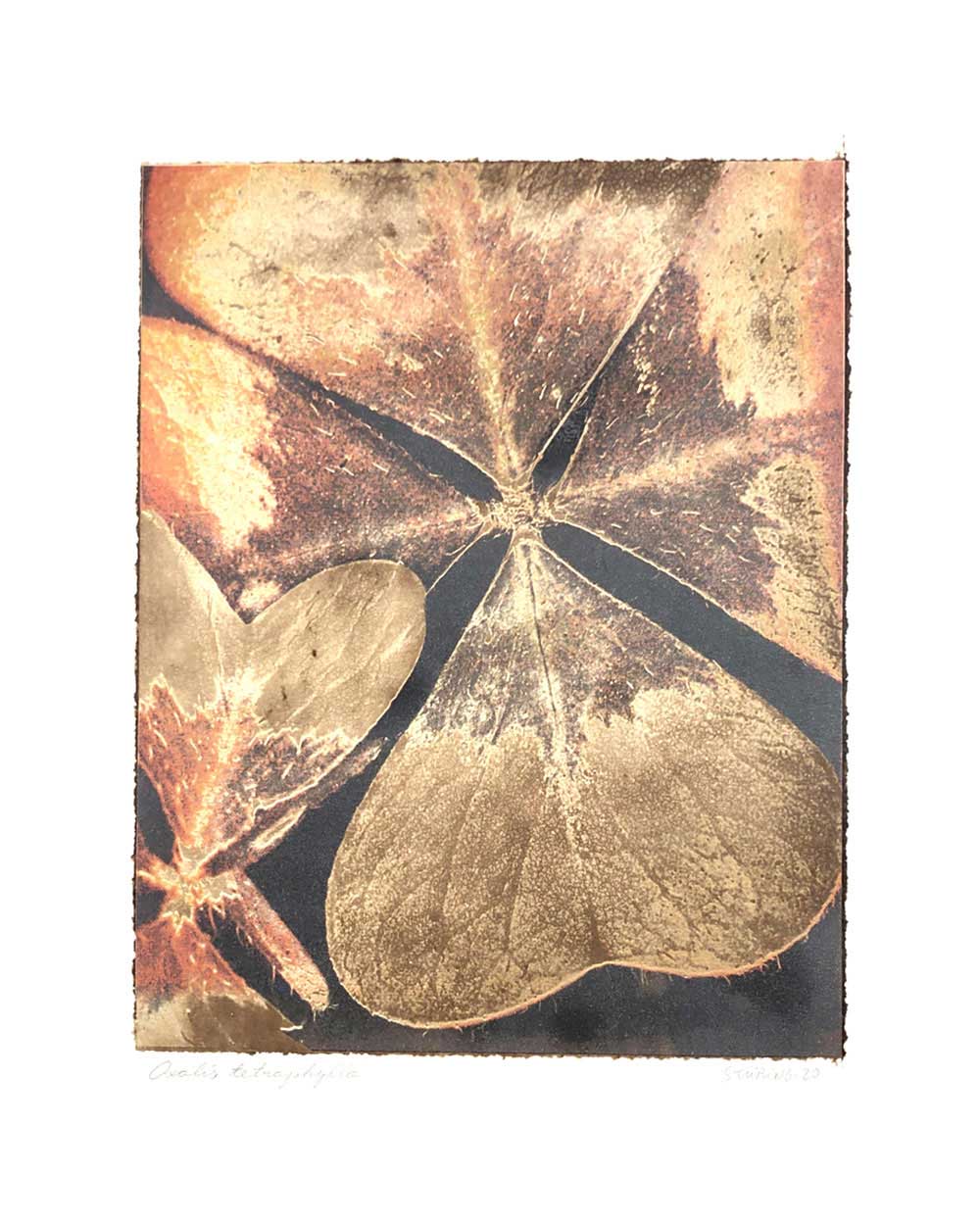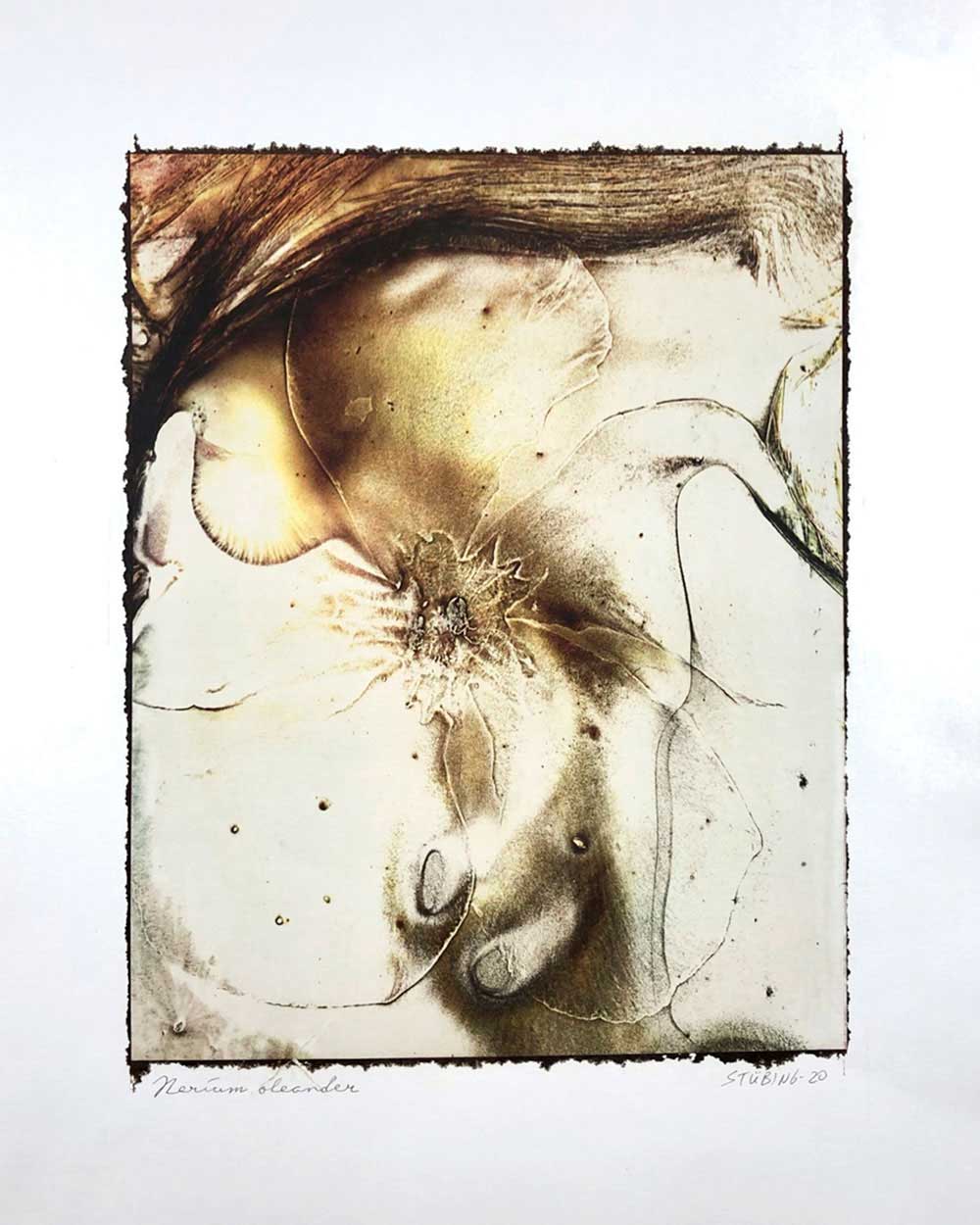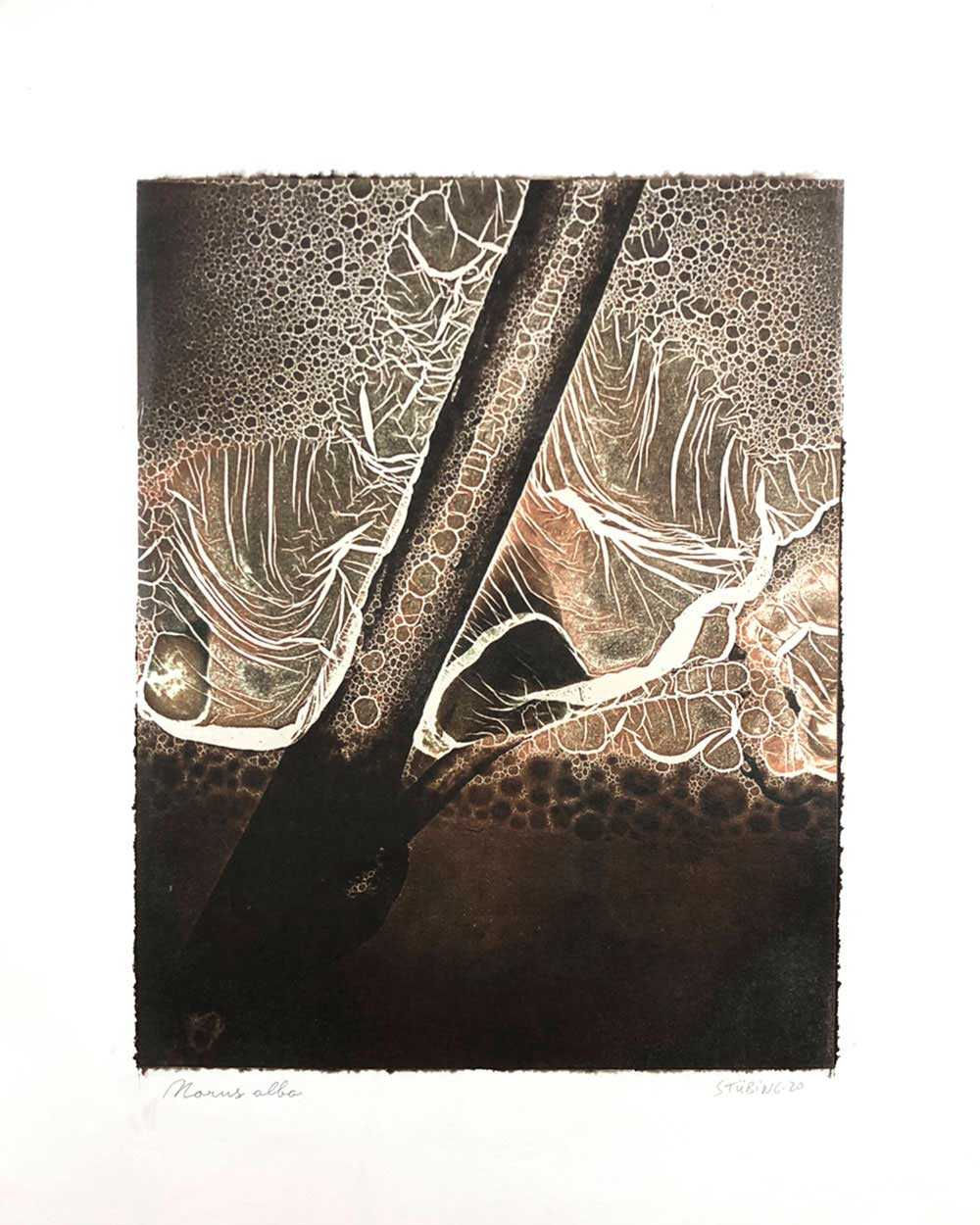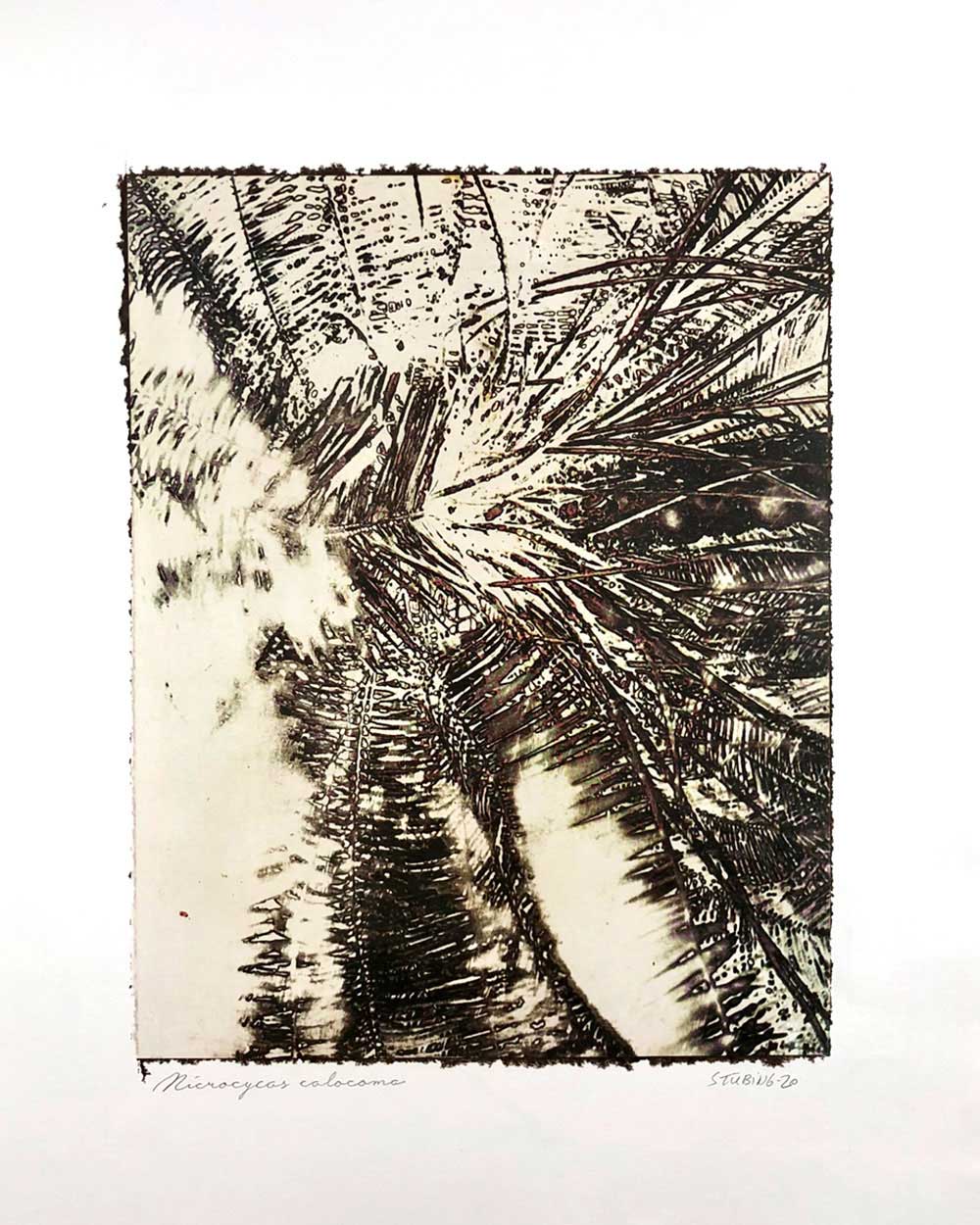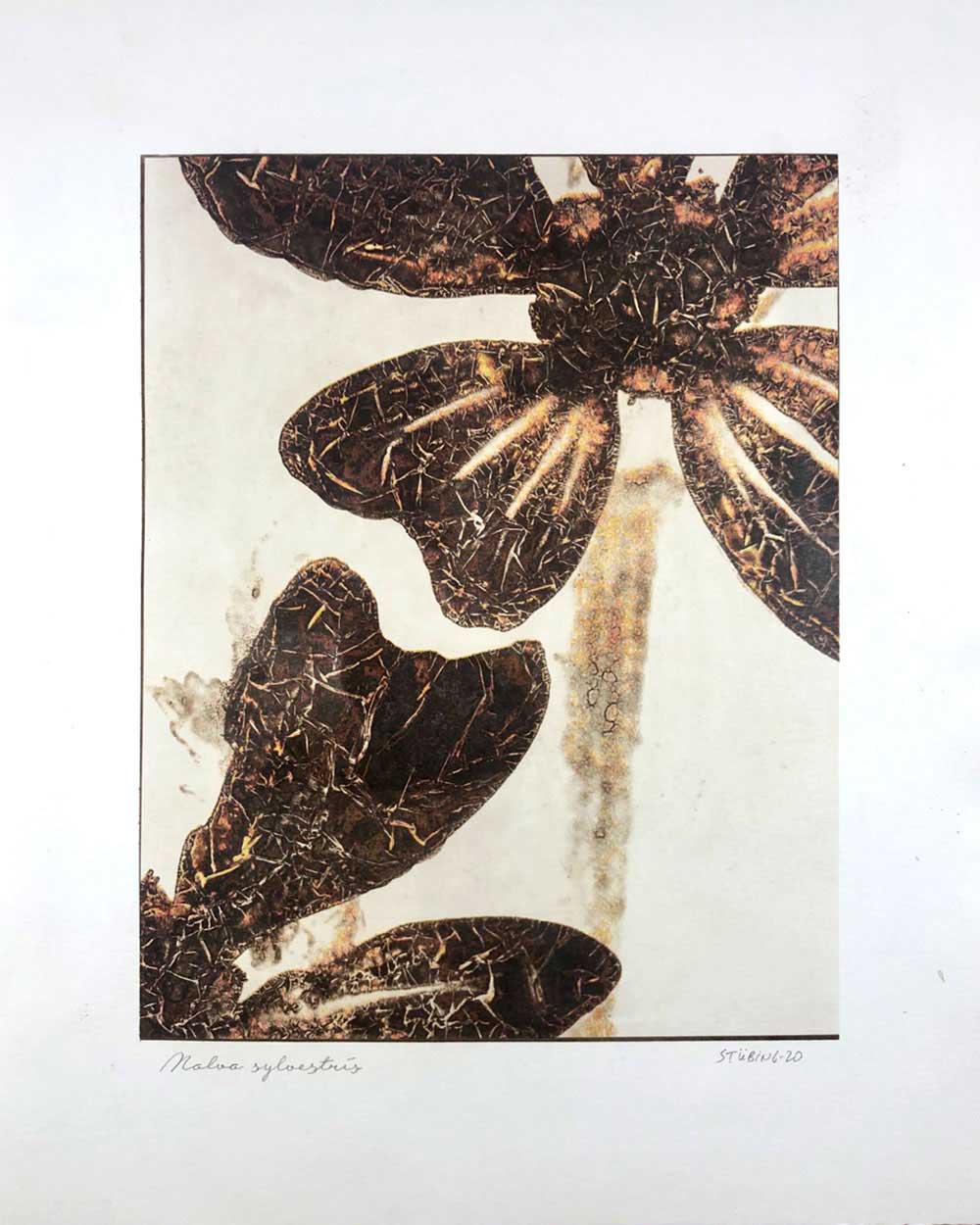“BotaniKa: Climatic change” I claim an allegory about climate change and one of its main consequences, the desertification of ecosystems that threatens to destroy a large part of their biodiversity.
The degradative process (mordancage) to which the negatives are damaged reveals structures that recall the behavior of the soil and plants when subjected to the effects of excessive drought and heat, both main consequences of the desertification originated by the climatic change. I start from macro photographs made with an old Polaroid CU-5 “hand” loaded with 4×5 B&W film (Ilford Delta 100 or Fomapan 100). The negatives are treated with an adapted (softer as for gelatin silver prints) mordancage formula. The resulting altered and partiallly destroyed negative is scanned and used as base for the final print. On one side I print a xerography on a transparency from the CMY channels, and after this I transfer it on paper using solvent and an etching press. With the K channel a contact negative is printed on a transparency and is contact printed overlayed using the argyrotype technique.
About Gerardo Stübing
Gerardo Stübing (Stübing), born in Valencia (1957). Professor of Botany at the University of Valencia. Graduated in Fine Arts, he is currently studying doctorate in Fine Arts at the Polytechnic University of Valencia. Stübing is a Valencian artist of German origin who has a long career and scientific recognition in the field of Botany, a science he has taught as a university professor for 30 years at the University of Valencia. Since 15 years 15 years he has simultaneously developed an artistic creation work.
The objective of his works, beyond the strict artistic creation, is to deepen the awareness of the beauty and harmony of nature and to experience an artistic production based on them, seeking to sensitize the observer in the appreciation and respect for our natural environment, as we protect that of what we fall in love, and to fall in love with something or someone previously we have to know it.
He establish an alchemical hybridization between science, art and nature, combining photographic techniques from the 19th, 20th and 21st centuries to develop works that can be considered, either as ambiguous abstractions of reality, or as figurative representations of unusual aspects of botanical species for the non-experienced observer. His works have been selected in more than 60 competitions, some of them at the highest level such as the BMW prize, having won several awards and prizes, and made several exhibitions both collective (more than 50) and individual (10). It has works in official institutions: University of Valencia, International University of Andalusia, Jiloca Studies Center), Bancaja de Segorbe Foundation, British Institute of Seville and Ministry of Agriculture. [Official Website]



